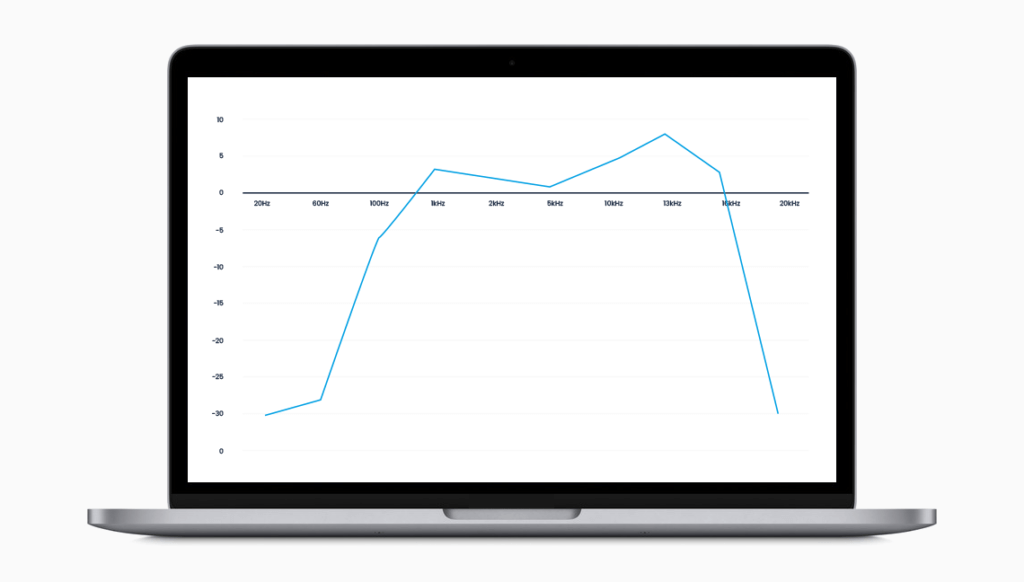Sound Laboratory: The Heart of Audio Excellence
In the Amplifier project, we investigated audio ad quality on four popular digital audio listening device types: laptops, mobile phones (including tablets) with headphones, smart speakers, and televisions (including smart TVs).
This resulted in a group of devices that account for most audio usage. A specific device was chosen for further analysis within each group based on market data, popularity, and sales dynamics.
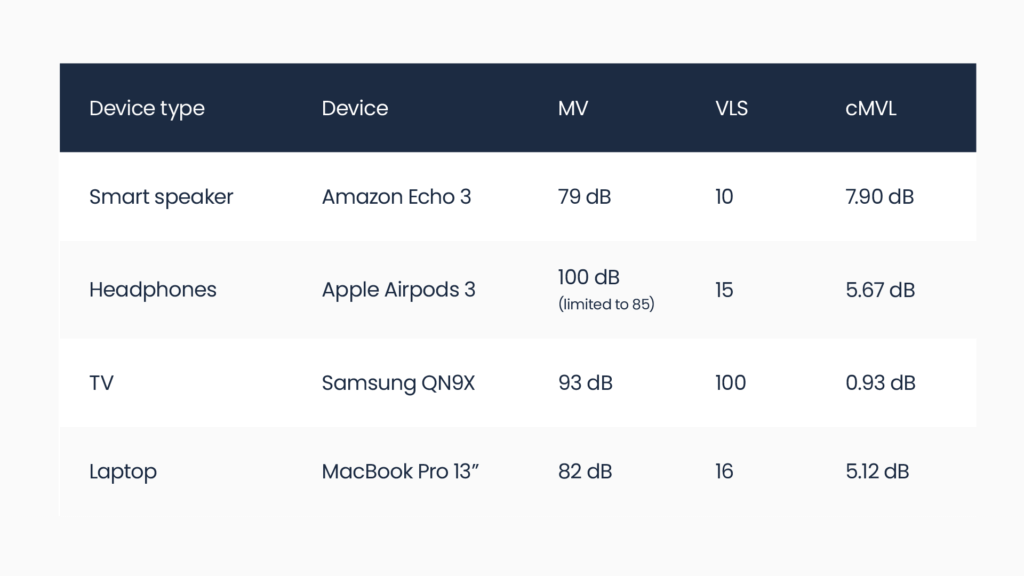
Group of devices for further research on audibility by selected criteria
Exploring Distortion for Perfection
Audio devices typically aim to replicate recorded audio within the audible frequency range of 20Hz to 20,000Hz (20kHz), although this range can vary. Manufacturers strive for faithful audio reproduction, yet every device introduces its level of distortion or imperfection. This discrepancy can result in sound levels and quality variations, causing the same audio to sound different across different speakers or devices.
Our engineers meticulously measured distortions in chosen devices like smart speakers, TVs, earbuds, and laptops. This data formed the basis for compensating these distortions in the sound amplification process.
The Amplifier corrects the device’s distortions, delivering sound closer to its intended quality for listeners.
This study used a “frequency sweep” on specific devices – an artificial sound model generated by our engineers using a Digital Audio Workstation (DAW).
The sweep spans 20Hz to 20kHz, the entire audible frequency spectrum for humans. Importantly, it maintains consistent volume across frequencies, within 0.1 dB variation.
Advanced Sound Capture Techniques for Audio Precision
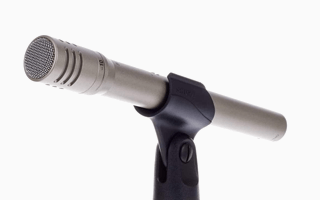
Our engineers utilised three microphones – Shure SM81, Sennheiser MKH40P48, and Neumann M149 – each known for specific recording purposes in the audio industry.
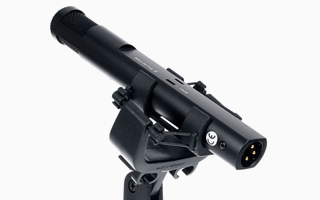
Shure SM81 excels in acoustic instrument recording, Sennheiser MKH40P48 is ideal for wind instruments, and Neumann M149 is preferred for vocals.
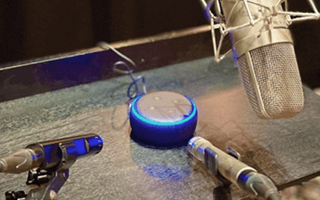
Recording through these microphones minimised distortions. Combining them aimed for a comprehensive sound image while minimising each microphone's distinct tonal characteristics.
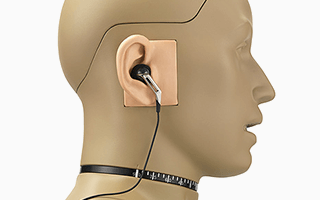
For headphone sound analysis, specialised equipment was used—a life-sized mannequin with integrated microphones, employing a Kemar mannequin from Gras Acoustics for accurate measurements.
Enhancing Audio Ad Quality in Real Time
- Sound engineers meticulously compared the recorded waveform with a reference sound graph using a spectrum analyser—a visual representation tool for sound.
- This comparison revealed differences between the microphones’ reference and recorded sound. Consequently, engineers crafted specific recommendations for adjusting individual frequencies (EQ) on various devices to ensure optimal audio quality.
- The measurements provided crucial insights into the chosen devices’ sound enhancements or reductions in particular frequencies.
- AdTonos engineers conveyed these recommendations to software engineers to create an automated sound correction system. This system ensures consistent and superior audio quality for ads on a specified group of four devices.
Sonic Innovation
Where Artistry Meets Science to Deliver Advertising That Speaks Volumes
We developed innovative tools following a comprehensive lab study to elevate sound quality and improve ad audibility.
The latest addition to its tech arsenal is Amplifier, a software product designed to enhance audio quality by aligning media files with specific device profiles.
This refined media is instantly delivered to clients without noticeable delays. With cutting-edge protocols and tools, the software engineering team at AdTonos ensures optimised ad delivery across diverse publishers and platforms without sacrificing transparency or reliability.
